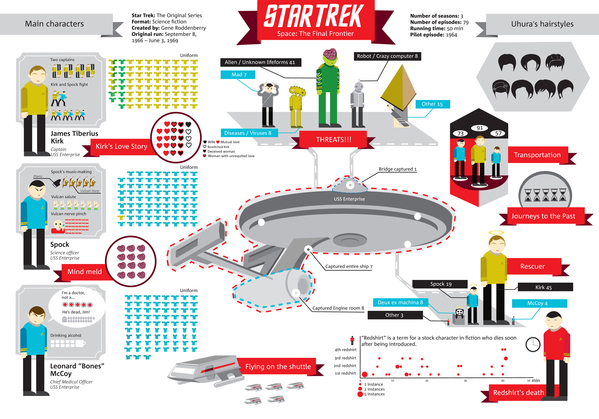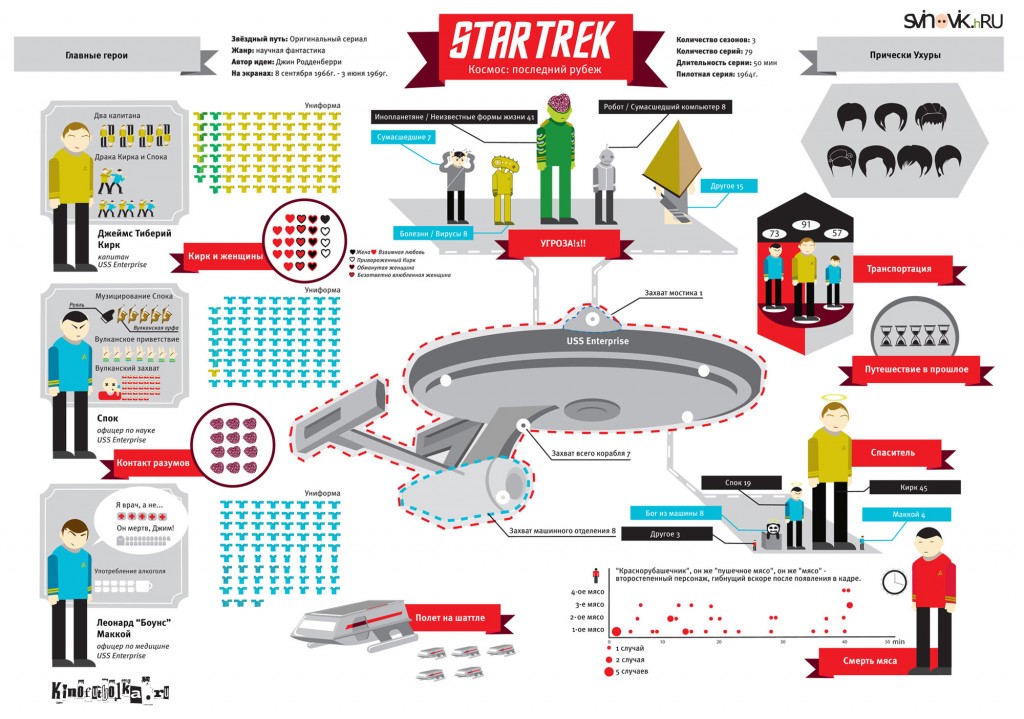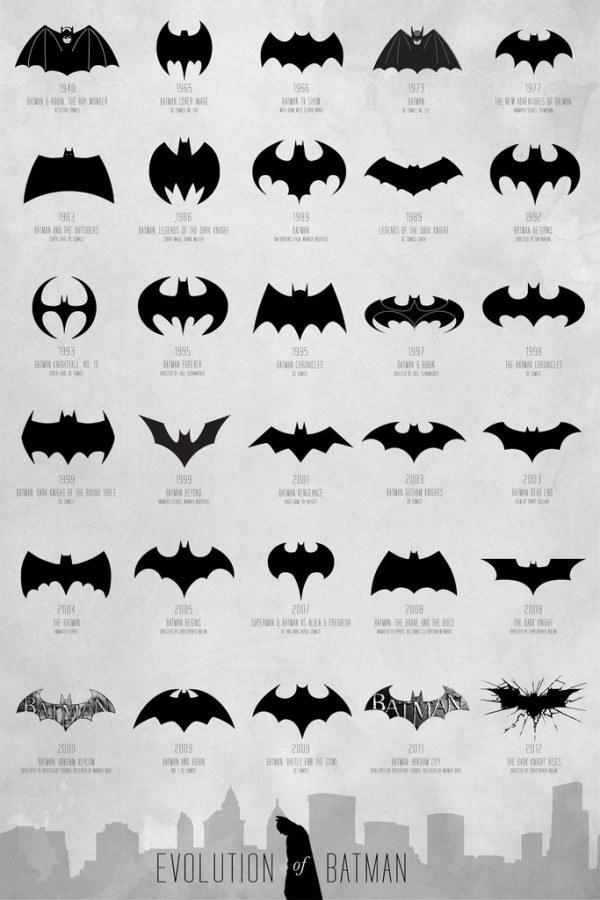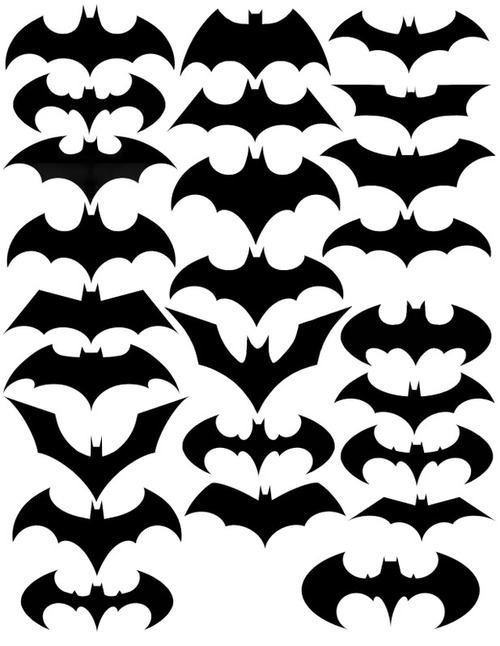Star Trek: The Original Series
The Star Trek infographic designed by Natalya Platonova was originally designed in Russian for Svinovik.ru. This infographic is a visual overview of some quirky statistics from the complete original series (three seasons).
Overall, very well done! As a Trekkie myself, the visualizations are fun facts about the series, and well designed. I like that the quantitative values (like the uniforms worn) are shown as the actual numbers and not scaled.
A couple of framing pieces of information would have been helpful. The original design is published along with a text article, but some introductory text in the infographic itself would be nice because the image file gets shared without any of the text from the article. The fotter should include some type of copyright or Creative Commons license and the URL for readers to be able to find the original, full-size versions.
Here’s the original version in Russian:
Found on Visual Loop!


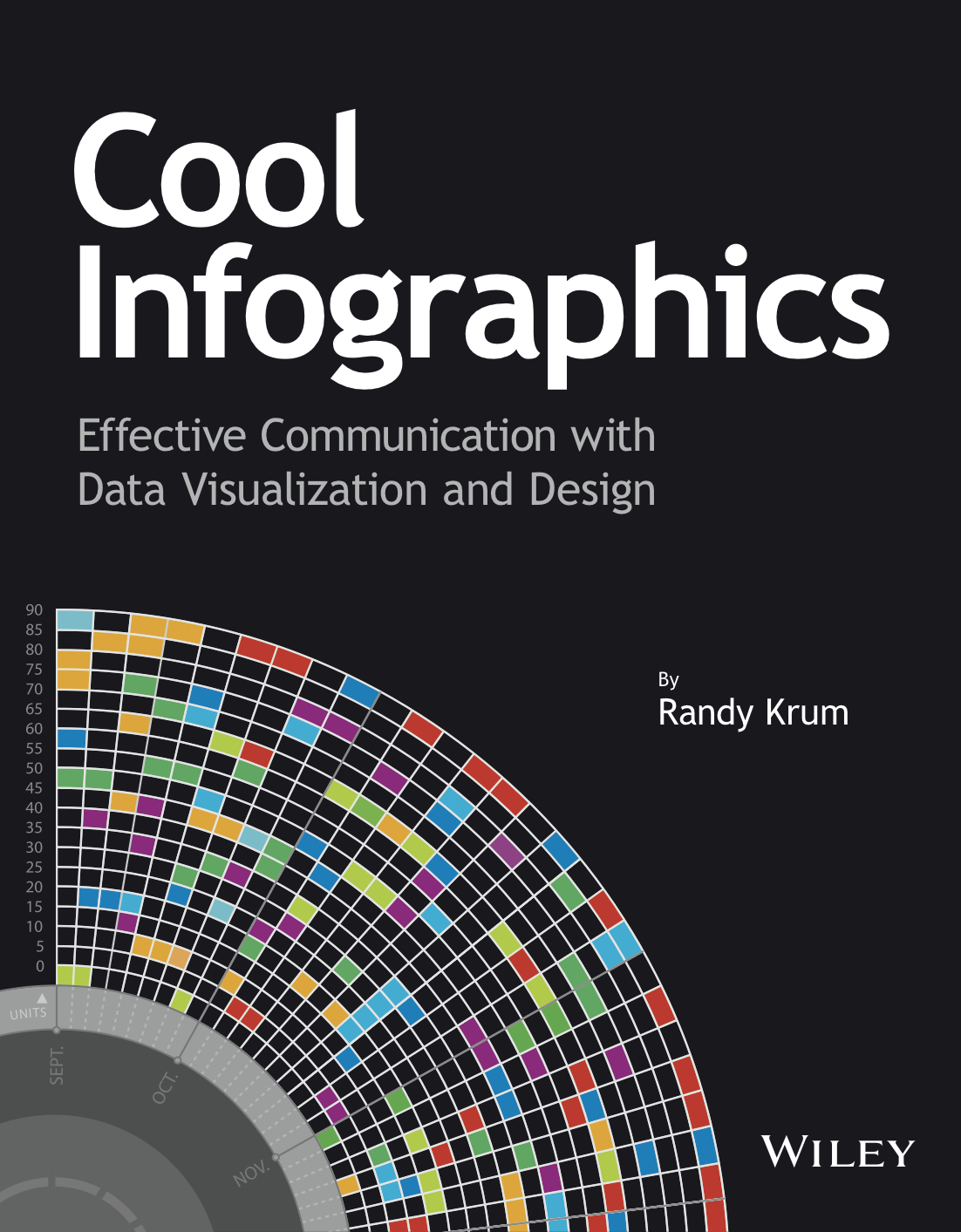





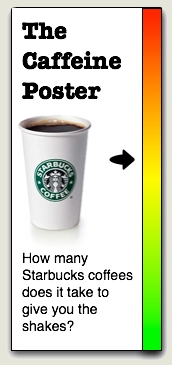
 Randy
Randy